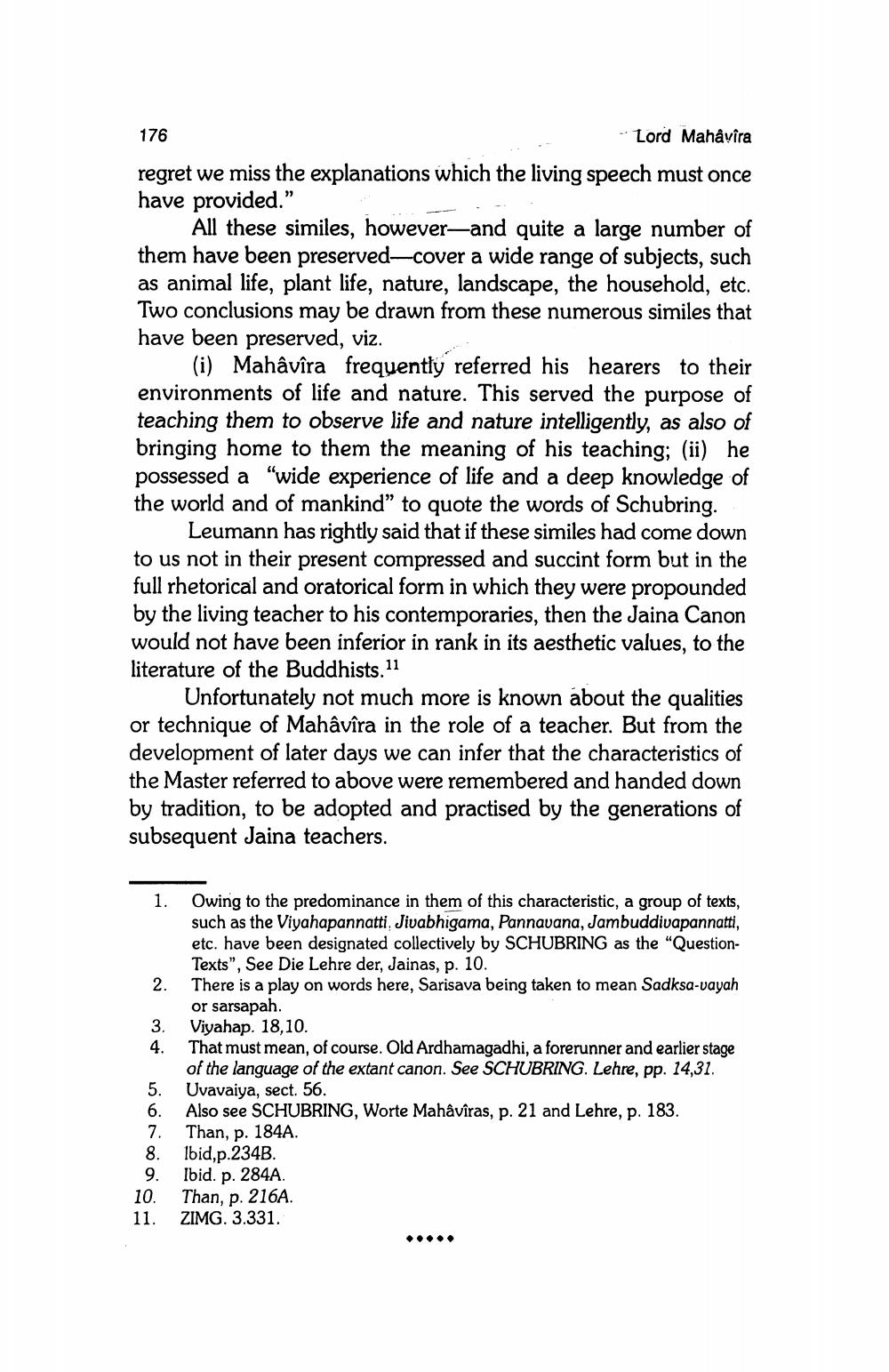________________
176
Lord Mahâvîra
regret we miss the explanations which the living speech must once have provided."
All these similes, however-and quite a large number of them have been preserved-cover a wide range of subjects, such as animal life, plant life, nature, landscape, the household, etc. Two conclusions may be drawn from these numerous similes that have been preserved, viz.
(i) Mahâvîra frequently referred his hearers to their environments of life and nature. This served the purpose of teaching them to observe life and nature intelligently, as also of bringing home to them the meaning of his teaching; (ii) he possessed a "wide experience of life and a deep knowledge of the world and of mankind" to quote the words of Schubring.
Leumann has rightly said that if these similes had come down to us not in their present compressed and succint form but in the full rhetorical and oratorical form in which they were propounded by the living teacher to his contemporaries, then the Jaina Canon would not have been inferior in rank in its aesthetic values, to the literature of the Buddhists.11
Unfortunately not much more is known about the qualities or technique of Mahâvîra in the role of a teacher. But from the development of later days we can infer that the characteristics of the Master referred to above were remembered and handed down by tradition, to be adopted and practised by the generations of subsequent Jaina teachers.
1.
2.
3.
4.
567890
5.
7.
6. Also see SCHUBRING, Worte Mahâvîras, p. 21 and Lehre, p. 183.
8.
9.
Owing to the predominance in them of this characteristic, a group of texts, such as the Viyahapannatti, Jivabhigama, Pannavana, Jambuddivapannatti, etc. have been designated collectively by SCHUBRING as the "QuestionTexts", See Die Lehre der, Jainas, p. 10.
There is a play on words here, Sarisava being taken to mean Sadksa-vayah or sarsapah.
10.
Viyahap. 18,10.
That must mean, of course. Old Ardhamagadhi, a forerunner and earlier stage of the language of the extant canon. See SCHUBRING. Lehre, pp. 14,31. Uvavaiya, sect. 56.
Than, p. 184A.
Ibid,p.234B.
Ibid. p. 284A.
Than, p. 216A.
11. ZIMG. 3.331.




